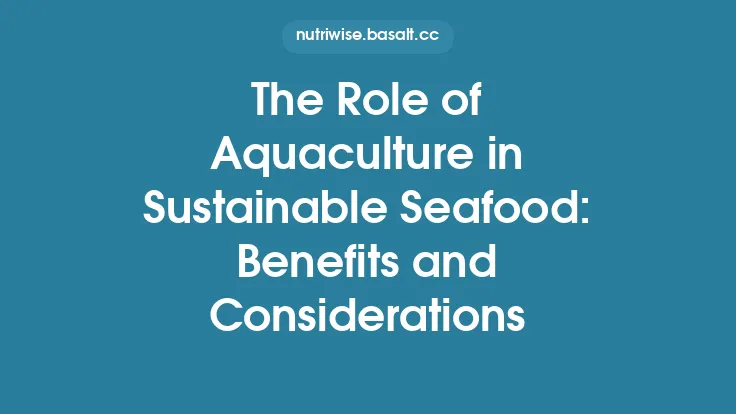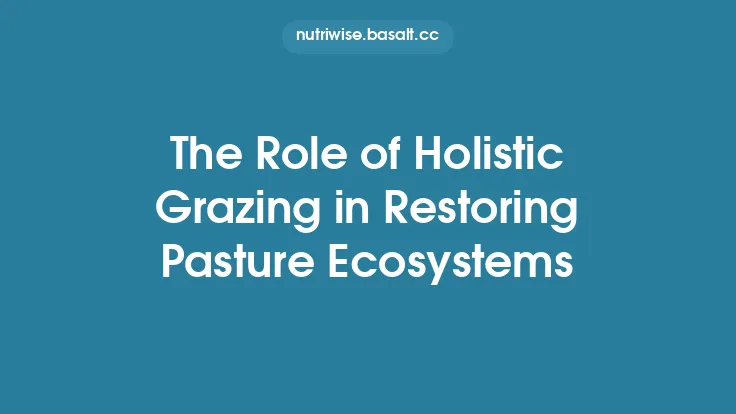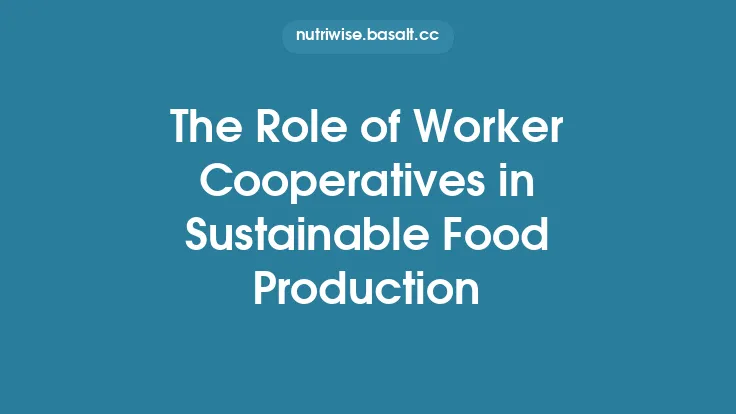Traditional diets—those culinary patterns that have been shaped over generations within a specific cultural and ecological context—are more than a collection of recipes. They are living systems that intertwine human nutrition with the health and complexity of the surrounding environment. When people eat the foods that their ancestors harvested, hunted, fished, or gathered, they reinforce a set of practices that sustain the mosaic of habitats, soil processes, water cycles, and species interactions that define ecosystem diversity.
Defining Traditional Diets and Their Cultural Foundations
A traditional diet is rooted in the long‑term interaction between a community and its local biophysical setting. It reflects:
- Geographic specificity – the flora, fauna, and climatic rhythms of a region dictate which foods are available and when.
- Cultural transmission – cooking techniques, preservation methods, and seasonal taboos are passed down through oral tradition, rituals, and communal labor.
- Resource stewardship – many traditional societies embed rules for harvesting, hunting, and fishing that prevent overexploitation and maintain ecological balance.
These elements together create a feedback loop: the diet shapes the landscape, and the landscape, in turn, shapes the diet.
Co‑evolution of Food Practices and Local Ecosystems
Over centuries, human foraging, cultivation, and animal husbandry have co‑evolved with the ecosystems they depend on. This co‑evolution manifests in several ways:
- Selective pressure on wild species – Repeated, low‑intensity harvesting of certain wild plants can favor individuals that regenerate quickly, thereby stabilizing plant populations.
- Mutualistic relationships – Traditional agro‑pastoral systems often rely on animals that disperse seeds, control pests, or fertilize soils, creating a network of mutual benefits.
- Landscape engineering – Practices such as terrace building, controlled burning, and the creation of fish ponds modify microhabitats, increasing structural heterogeneity and providing niches for a broader array of organisms.
Because these practices are fine‑tuned to local conditions, they tend to preserve a suite of ecological functions that more homogenized, industrial food systems may erode.
Land‑Use Patterns Embedded in Traditional Food Systems
Traditional diets are inseparable from the spatial organization of land use. Key patterns include:
- Mosaic agriculture – Small plots of crops are interspersed with hedgerows, fallow fields, and natural vegetation. This patchwork supports a diversity of pollinators, soil microbes, and predatory insects.
- Silvopastoral integration – Livestock graze beneath tree canopies, simultaneously maintaining grassland productivity and forest regeneration. The resulting vertical stratification enhances habitat complexity.
- Multi‑trophic aquaculture – In many coastal and inland communities, fish ponds are stocked with species that occupy different trophic levels, allowing waste from one species to become nutrients for another, thereby reducing external inputs and supporting aquatic biodiversity.
These land‑use configurations generate a high degree of habitat heterogeneity, which is a cornerstone of ecosystem diversity.
Role of Indigenous Livestock and Aquaculture Practices
Traditional animal husbandry and fishery practices differ markedly from intensive, single‑species operations:
- Genetically diverse livestock – Indigenous breeds are often adapted to marginal environments, requiring fewer external feeds and exhibiting disease resistance. Their grazing patterns can promote plant species turnover and prevent the dominance of a single grass species.
- Seasonal migration – Pastoralists move herds across seasonal pastures, allowing vegetation in previously grazed areas to recover and supporting a dynamic mosaic of successional stages.
- Community‑managed fisheries – Traditional fishing grounds are governed by customary rules that limit catch size, protect spawning sites, and rotate harvesting zones, thereby sustaining fish population structures and the broader aquatic food web.
These practices maintain functional diversity within both terrestrial and aquatic ecosystems.
Seasonal Harvesting and Its Ecological Implications
Traditional diets are intrinsically seasonal, aligning consumption with the natural phenology of local resources:
- Temporal resource partitioning – By consuming different foods at distinct times of the year, communities avoid continuous pressure on any single species, allowing populations to replenish.
- Nutrient cycling synchronization – Harvesting of wild greens, tubers, or fruits often coincides with periods of natural leaf fall or animal migration, integrating human activity into existing nutrient fluxes rather than disrupting them.
- Cultural festivals and fasting periods – Ritualized abstention or feasting can serve as informal management tools, creating predictable windows of reduced extraction that benefit vulnerable species.
Seasonality thus acts as a built‑in regulatory mechanism that supports the resilience of ecosystems.
Traditional Knowledge as a Driver of Ecosystem Management
Indigenous and local knowledge systems encode detailed observations of ecological processes:
- Phenological calendars – Knowledge of flowering, fruiting, and animal migration timings guides harvest decisions, ensuring that extraction aligns with reproductive cycles.
- Ecological indicators – Certain plant or animal behaviors are used as signals for environmental changes (e.g., the appearance of a particular insect indicating soil moisture levels), prompting adaptive adjustments in land use.
- Reciprocal stewardship ethics – Many cultures embed moral obligations to “give back” to the land, such as planting seed trees after a harvest or performing communal clean‑up of waterways.
When these knowledge systems are respected and integrated into contemporary food policies, they reinforce the ecological underpinnings of traditional diets.
Preservation of Habitat Heterogeneity Through Food Practices
The cumulative effect of the practices described above is the maintenance of a patchwork of habitats:
- Edge habitats – The boundaries between cultivated fields, fallow lands, and natural vegetation create edge zones that support species from both adjoining ecosystems.
- Microtopography – Terracing, raised beds, and fish ponds introduce variations in elevation and moisture, fostering niche differentiation.
- Disturbance regimes – Controlled burns, selective pruning, and low‑intensity grazing generate a spectrum of successional stages, each supporting distinct assemblages of flora and fauna.
Such heterogeneity is a primary driver of species richness and functional diversity at the landscape scale.
Illustrative Case Studies
1. Mediterranean Agro‑Ecology
In the Mediterranean basin, smallholder farms combine olive groves, vineyards, and herb gardens with stone walls and scrubland. The resulting “cultural landscape” supports a high density of reptiles, insects, and birds, many of which rely on the structural complexity created by traditional pruning and grazing practices.
2. Amazonian Riverine Communities
Riverine peoples harvest fish using hand‑crafted nets and practice seasonal “fishing bans” during spawning periods. Simultaneously, they cultivate flood‑tolerant crops on raised beds, which stabilize riverbanks and provide habitat for amphibians and aquatic invertebrates.
3. East African Pastoralism
Nomadic herders move cattle, goats, and camels across savanna mosaics, allowing grasslands to recover and preventing woody encroachment. Their livestock also disperse seeds of native grasses, contributing to plant community resilience.
These examples demonstrate how diet‑linked practices sustain a spectrum of habitats and the species they support.
Challenges to the Continuity of Traditional Diets
Despite their ecological benefits, traditional food systems face mounting pressures:
- Market integration – Global supply chains often favor standardized, high‑yield crops, marginalizing locally adapted foods.
- Land tenure insecurity – Loss of communal land rights can disrupt the spatial patterns essential for traditional practices.
- Cultural erosion – Younger generations may abandon ancestral foodways in favor of convenience foods, weakening the transmission of ecological knowledge.
- Climate variability – Shifts in precipitation and temperature regimes can alter the availability of key wild foods, challenging the adaptability of traditional calendars.
These stressors can diminish the capacity of traditional diets to uphold ecosystem diversity.
Strategies for Supporting Traditional Food Systems
To preserve the ecological functions embedded in traditional diets, a multi‑layered approach is needed:
- Legal recognition of customary land rights – Secure tenure enables communities to maintain the spatial arrangements that underpin their food practices.
- Incentivizing agro‑ecological markets – Certification schemes that value ecosystem services can create premium markets for foods produced through traditional methods.
- Documentation and revitalization of indigenous knowledge – Collaborative research with elders can codify seasonal calendars, harvesting protocols, and stewardship ethics for transmission to younger members.
- Climate‑smart adaptation – Supporting community‑led experiments that adjust planting dates, diversify foraged species, or modify grazing routes can enhance resilience without breaking the link to local ecosystems.
- Education and culinary tourism – Showcasing traditional dishes in schools and to visitors raises awareness of their cultural and ecological significance, fostering demand for their continued production.
When implemented holistically, these measures reinforce the feedback loops that keep ecosystems diverse and productive.
Concluding Perspective
Traditional diets are not merely nostalgic relics; they are dynamic, place‑based food systems that actively shape and are shaped by the ecosystems from which they draw. By aligning human consumption with seasonal rhythms, spatial mosaics, and culturally embedded stewardship practices, these diets sustain a breadth of habitats, species interactions, and ecological processes that are essential for overall ecosystem diversity. Protecting and revitalizing traditional foodways therefore represents a concrete pathway toward preserving the intricate web of life that underlies both human well‑being and planetary health.





